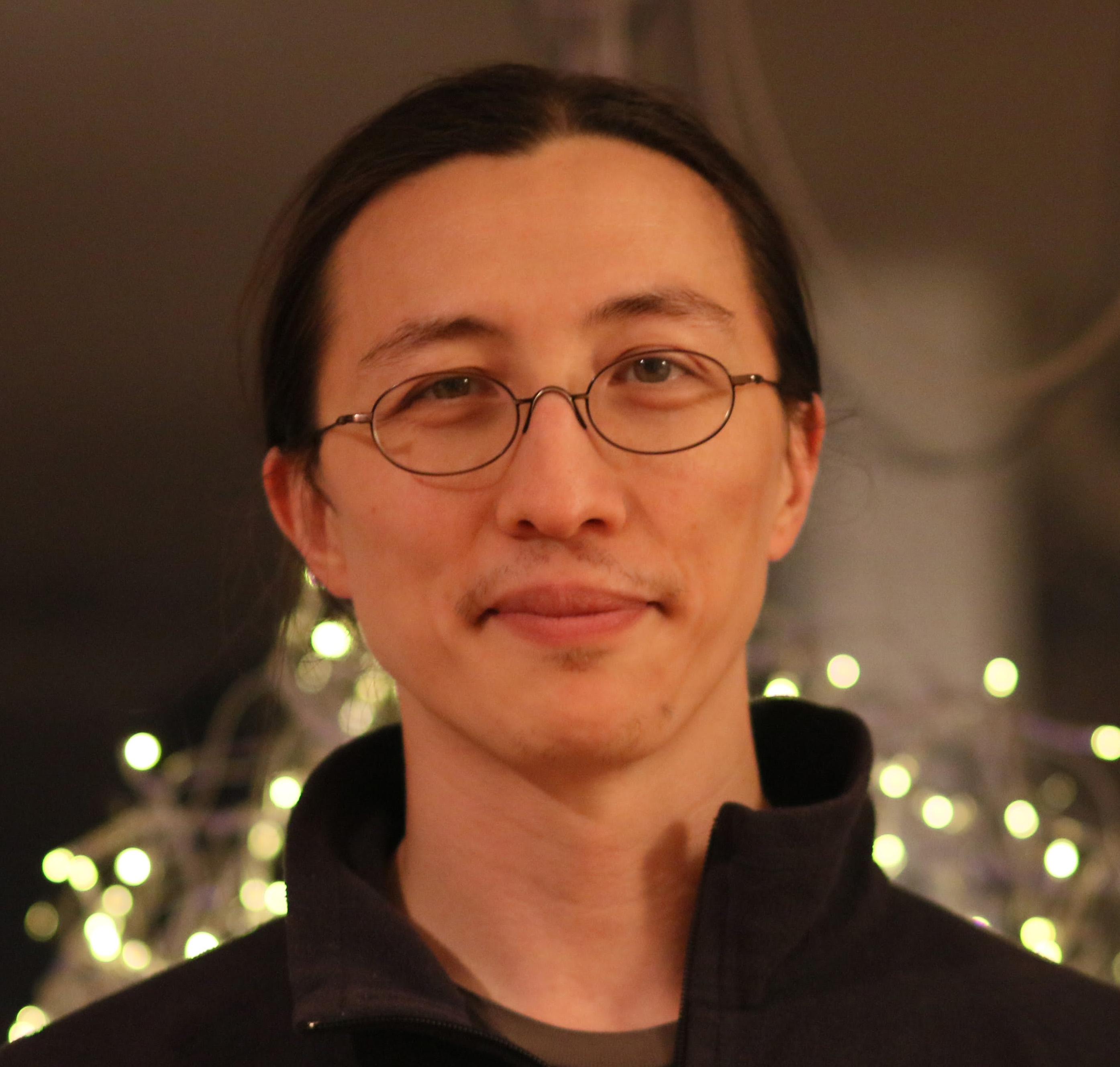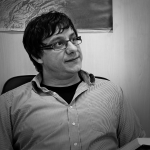
Dr. Joseph T. Foley
Assistant Professor, Reykjavík University Science and Engineering Department

Dr. Aleš Zamuda
Assistant Professor, Faculty of Electrical Engineering and Computer Science at the University of Maribor

Dr. Domen Mongus
Associate Professor, Faculty of Electrical Engineering and Computer Science at the University of Maribor
Axiomatic Design and Desirable Complexity
There are many design methodologies to choose from when beginning a project each with their own appropriate applications. In this tutorial, I begin by providing an ntroduction to Nam P. Suh’s “Axiomatic Design” to understand how it can be used to make intelligent design decisions using effectively only two rules i.e. Axioms: minimize oupling in requirements and choose solutions with low information content.
Not following these rules often results in “complex” systems which are not able to meet their requirements reliably. The general approach within Axiomatic Design is to avoid or eliminate complexity, but what if an unreliablity is exactly what is needed?
The second half of the tutorial explores the concept of “desirable complexity”, an application of Suh’s complexity for fields which want to create problems or challenges rather than eliminating them: puzzles, sabotage, physical security, and unique identification. In these areas, inverting AD complexity theory gives suggestions to making duplication and solution discovery challenging by creating seemingly unsolvable problems.
Index Terms—Axiomatic Design; Complexity; Information Theory; physical security
Differential Evolution and Systems, Signals, and Image Processing
As a complementary introduction to the Special Session on Differential Evolution (SSDE) held at 2018 25th International Conference on Systems, Signals and Image Processing (IWSSIP), this tutorial will establish basic definitions needed to grasp the topics presented along the SSDE contributions. Namely, for the interested listeners the topics and context surrounding challenges in the current progress of Differential Evolution (DE) might not always be trivial for new DE researchers and practitioners, especially in the manner of system complexity, terminology, and implementation.
Further, with establishing a common ground for presenters at the SSDE this tutorial will enlighten some recent developments on DE. Tutored will be some recent advances and modalities in DE and currently hot research directions useful in commencing DE research.
Also, some example DE applications specific to the topics of IWSSIP will be tutored, like optimization of power systems, underwater robotics navigation, and image processing for procedural trees reconstruction. Specifically, a top performing system for hydrothermal scheduling using DE will be highlighted and followed by comprehensive performance evaluation of optimization techniques on underwater glider path planning challenges. The tutored examples will be concluded through 3D procedural tree growth and sway animation reconstruction from processing multiple view images with DE.
Recent Advances in Point-Cloud Data Processing
Mounted on drones, aircrafts, cars, or other mobile platforms, advanced optical data acquisition technologies enabled rapid 3D mapping of Earth’s surface with immense resolution and near forensic precision. While the basic principles of pattern recognition in the acquired point-clouds are based on established approaches to image processing, lack of topology, possible irregular point distribution, and fusion of geometric and spectral information drives the demand for advancing on traditional methodologies.
During this tutorial, recent advances in 3D point-clouds will be discussed, starting from hierarchical data decompositions on the basis of mathematical morphology, followed by graph theoretical and geometrical approaches to definition of surfaces and their interlining for recognition of basic spatial entities like ground, buildings, and vegetation. Finally, a brief overview of interesting applications that arise from 3D Earth observation data will be given.
Dr. Joseph T. Foley
Education
2000-2007 Ph.D. in Mechanical Engineering, Massachusetts Institute of Technology (MIT).
1998-1999 M.Eng. in Computer Science and Electrical Engineering, MIT.
1994-1999 B.Sc. in Computer Science and Electrical Engineering, MIT.
Published work
J. T. Foley, V. Omelianov, S. Koziel, and A. Bekasiewcz, “Low-cost antenna positioning system designed with Axiomatic Design,” in 11th International Conference on Axiomatic Design (ICAD), O. Dodoun, Ed., Sep. 15–18, Iasi, Romania: MATEC Web of Conferences, 2017, p. 7
J. T. Foley, E. Puik, and D. S. Cochran, “The faucet reloaded: Improving Axiomatic Design by example,” in 11th International Conference on Axiomatic Design (ICAD), O. Dodoun, Ed., Sep. 15–18, Iasi, Romania: MATEC Web of Conferences, 2017, p. 7
A. Breznik, P. Planišič, and J. T. Foley, “Collaborative development of an open-source rocket control system,” in IEEE 26th International Electrotechnical and Computer Science Conference ERK 2017, Portorož, Slovenia, 2017, p. 4
J. T. Foley and D. S. Cochran, “Manufacturing system design decomposition: An ontology for data analytics and system design evaluation,” in Complex Systems Engineering and Development Proceedings of the 27th CIRP Design Conference, May 10–12, Procedia CIRP, Cranfield University, UK: Elsevier ScienceDirect, 2017, pp. 175–180
E. Pétursson, I. N. Karlsson, O. G. Garðarsson, P. Pálsson, V. O. Saulius Genutis, and J. T. Foley, “Axiomatic Design of equipment for analysis of SMA spring degradation during electronic actuation,” in Complex Systems Engineering and Development Proceedings of the 27th CIRP Design Conference, May 10–12, Procedia CIRP, Cranfield University, UK: Elsevier ScienceDirect, 2017, pp. 261–266
J. T. Foley, E. Puik, and D. S. Cochran, “Desirable complexity,” in 10th International Conference on Axiomatic Design (ICAD), A. Liu, Ed., Sep. 21–23, Procedia CIRP, vol. 53, Xi’an, Shaanxi, China: Elsevier ScienceDirect, 2016, pp. 101–106
J. Guls, Ó. I. Bjarnason, Ó. Pétursson, S. Ö. Einarsson, and J. T. Foley, “Application of Axiomatic Design in designing autonomous underwater photography lighting,” in 10th International Conference on Axiomatic Design (ICAD), A. Liu, Ed., Sep. 21–23, Procedia CIRP, vol. 53, Xi’an, Shaanxi, China: Elsevier ScienceDirect, 2016, pp. 278–283
E. Puik, J. T. Foley, and D. Ceglarek, “Ignorance is bliss: Sudden appearance of previously unrecognized information and its effect,” in 10th International Conference on Axiomatic Design (ICAD), A. Liu, Ed., Sep. 21–23, Procedia CIRP, vol. 53, Xi’an, Shaanxi, China: Elsevier ScienceDirect, 2016, pp. 70–77
J. T. Foley and S. Harðardóttir, “Creative Axiomatic Design,” in 26th CIRP Design Conference, Jun. 15–17, Procedia CIRP, Stockholm, Sweden: Elsevier ScienceDirect, 2016, pp. 688–694
D. S. Cochran, J. Li, K. Vanover, and J. T. Foley, “A System Design of a Rural Hospital Operating Room,” in 26th CIRP Design Conference, Jun. 15–17, Procedia CIRP, Stockholm, Sweden: Elsevier ScienceDirect, 2016, pp. 597–603
D. S. Cochran, J. T. Foley, and Z. Bi, “Use of the Manufacturing System Design Decomposition for Comparative Analysis and Effective Design of Production Systems,” International Journal of Production Research, vol. 55, pp. 870–890, 3 2016
Dr. Aleš Zamuda
Dr. Aleš Zamuda is an Assistant Professor and Researcher at University of Maribor (UM), Slovenia. He received Ph.D. (2012), M.Sc. (2008), and B.Sc. (2006) degrees in computer science from UM. He is management committee (MC) member for Slovenia at European Cooperation in Science (COST), actions CA15140 (ImAppNIO – Improving Applicability of Nature-Inspired Optimisation by Joining Theory and Practice) and IC1406 (cHiPSet – High-Performance Modelling and Simulation for Big Data Applications). He is vice-chair at IEEE Slovenia Section, IEEE Senior Member, IEEE Young Professionals chair for IEEE Slovenia Section, IEEE CIS member, ACM SIGEVO member, ImAppNIO Benchmarks working group vice-chair, and editorial board member (associate editor) for Swarm and Evolutionary Computation (2017 IF=3.893). His areas of computer science applications include ecosystems, evolutionary algorithms, multicriterion optimization, artificial life, and computer animation; currently yielding h-index 16, 38 publications, and 742 citations on Scopus. He won IEEE R8 SPC 2007 award, IEEE CEC 2009 ECiDUE, 2016 Danubuius Young Scientist Award, and 1% top reviewer at 2017 Publons Peer Review Awards, including reviews for 40 journals and 65 conferences.
Dr. Domen Mongus
Dr. Domen Mongus is associated professor at University of Maribor and a member of executive committee of European Umbrella Organization for Geographic Information (EUROGI), where he is project portfolio leader. He is vice-president of program committee of Slovenia Strategic Research and Innovation partnership (SRIP) in the priority area Smart Cities and Communities, as representative of Horzontal Network ICT. In his academic career, he has received several awards for his scientific and pedagogic work. He was named Young Scientist of Danube Region by the Austrian Federal Ministry for Science, Research and Economy (BMWFW) and the Institute for the Danube Region and Central Europe (IDM). In 2015, he received IS Award for ongoing work that is considered to be the greatest recognition in the fields of information society, information technology and computer science is Slovenia. His work on object detection in 3D remotely sense data was pronounced as Exceptional Achievement of Slovenian Science by Slovenian Research Agency. In 2012 and 2013, he received awards for Pedagogic Excellence at UM-FERI and Exception Research Achievements, respectively. He was named for “The Name of the week” in January 2015 by Slovenian National Radio and Television, Val 202, for developing the most accurate algorithms for ground and building recognition in the Earth Observation data, as recognised by International Society of Photogrammetry and Remote Sensing. In 2018, he received the highest award at University of Maribor for his exceptional contributions to its scientific and pedagogical reputation and excellence.


